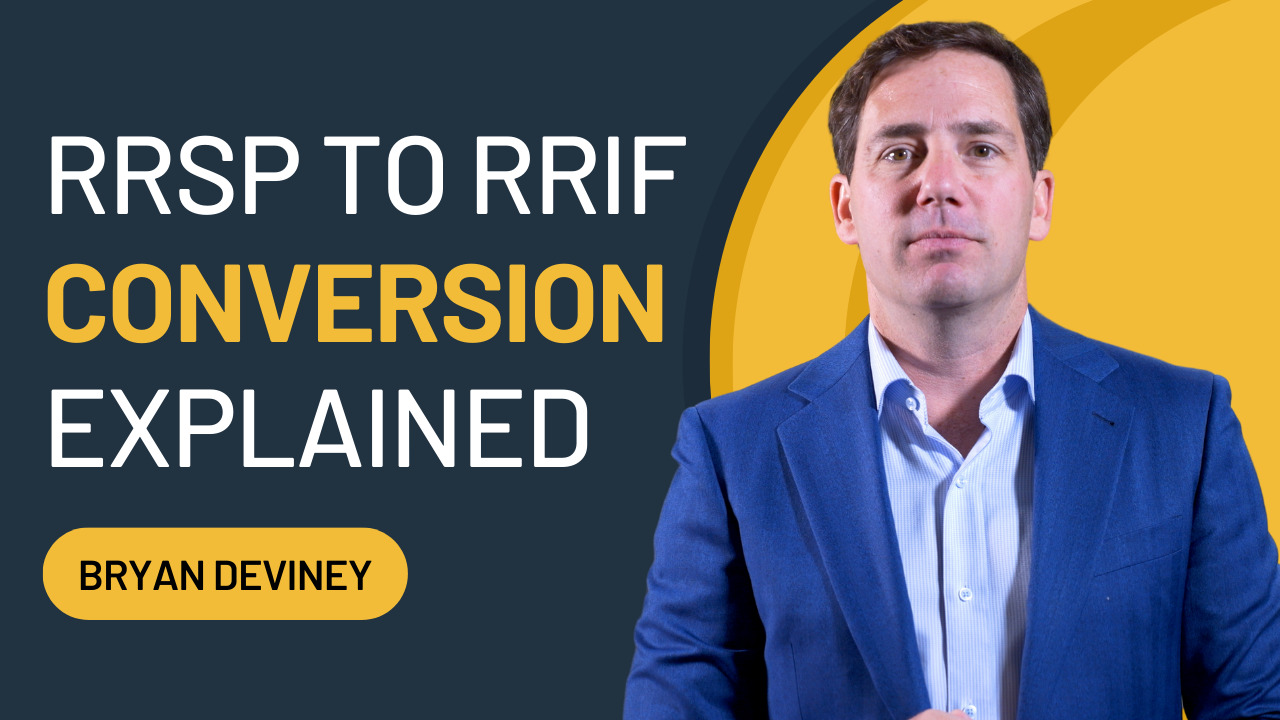
RRSP to RRIF Conversion Explained
One of the most common questions I hear is around the conversion of an RRSP into a RRIF. When do I need to do it? How much needs to come out? What investments can I hold in a RRIF? When do I receive the payments?
Before we dive into the details, let’s clarify the terms. An RRSP stands for Registered Retirement Savings Plan, where you contribute for retirement. On the other hand, a Registered Retirement Income Fund or RRIF is designed for retirement when you want to withdraw your hard earned savings.
When is this conversion possible?
Now, when can you make this conversion? You can convert an RRSP to a RRIF at any age, whether you’re 35, 45, or 65 years old, but it must be done in the year you turn 71. Typically, people convert an RRSP to a RRIF when they’ve retired and need income.
How much needs to be withdrawn?
Once your funds are inside a RRIF, the government sets a minimum withdrawal amount each year. This withdrawal is calculated using an age factor applied to the market value as of December 31st of the previous year. The withdrawal rate increases as you grow older. For example, a 65-year-old must withdraw at least 4%, while a 75-year-old must withdraw 5.82%. This represents the minimum amount, and you have the flexibility to withdraw more if you choose. For RRIFs, there’s no upper limit on withdrawals, although there are certain limits for locked-in plans like LIRAs but we’ll discuss that aspect another time.
For instance, if you’re 65 years old with a $1,000,000 RRSP and fully converted it to a RRIF, you’d be required to withdraw at least $40,000. However, if you only need $20,000, you can convert a smaller amount into a RRIF, say $400,000, where the minimum withdrawal would be $16,000, allowing you to request $20,000. The remaining $600,000 can stay in your RRSP. Remember in this example you’re still under 71 so you have flexibility. If you were 71 you’d be forced to convert the entire RRSP.
Taxes
Now taxes. Any funds withdrawn from a RRIF are fully taxable as income. You’ll receive a T4RIF like you would receive a T4 from an employer. On the mandatory withdrawal amount, you have the choice to be taxed at the time of withdrawal or wait until its tax time and settle up. Most people prefer not to owe taxes in April and choose to take taxes off at the time of withdrawal. Nobody likes a tax surprise.
Investments Choices
Before 1978, the government required you to purchase an annuity when converting an RRSP to a RRIF or withdraw the entire balance. You would think that this would be ancient history but it is still etched in the minds of many people. Fortunately, regulations have changed, and you can now hold virtually any type of investment, including those you had in your RRSP. There is also a misconception that your portfolio should be overhauled to reflect your new status as a retiree. Perhaps. But in most cases no substantial changes are needed because your retirement plan still has decades of life to it.
Payment Frequency
Payments from your RRIF can be set up on a monthly, quarterly, or annual basis. There’s no one-size-fits-all answer; we recommend aligning the payment frequency with your cash flow needs. For instance, if you require funds for day-to-day or month-to-month expenses, take the payments monthly. Some take it annually. One client, for example, goes to Florida every November for the winter and prefers to receive her full RRIF payment before leaving to have a lump sum that she can enjoy in the sunshine.
Upon Your Passing
What happens on your death? Similar to an RRSP, the account value of your RRIF passes to your spouse on a tax-deferred basis. If a non-spouse is named as the beneficiary, they will receive the value, but your estate will be responsible for any tax liability. For individuals with a substantial RRIF, this can lead to a significant tax bill. To potentially reduce your overall lifetime tax burden, consider withdrawing extra funds from the RRIF but that’s a whole other video. Fortunately we’ve already written the article called “Triggering Tax; On Purpose? You’re Crazy”.
So, there you have it, a clear overview of the RRSP to RRIF conversion process. If you have any questions, feel free to reach out to us. Thanks for watching, and stay tuned for more videos.

The opinions expressed are those of the author and not necessarily those of Assante Capital Management Ltd. This material is provided for general information and the opinions expressed and information provided herein are subject to change without notice. Every effort has been made to compile this material from reliable sources however no warranty can be made as to its accuracy or completeness. Before acting on the information presented, please seek professional financial advice based on your personal circumstances. Assante Capital Management Ltd. is a member of the Canadian Investor Protection Fund and the Investment Industry Regulatory Organization of Canada.
Quick Links
Privacy | Disclaimer | © 2019 Assante Wealth Management
Know your Advisor: IIROC Advisor Report
Assante Capital Management Ltd. is a Member of the Canadian Investor Protection Fund and Investment Industry Regulatory Organization of Canada. The services described may not be applicable or available with respect to all clients. Services and products may be provided by an Assante advisor or through affiliated or non-affiliated third parties. Some services and products may not be available through all Assante advisors. Services may change without notice. Insurance products and services are provided through Assante Estate and Insurance Services Inc.






